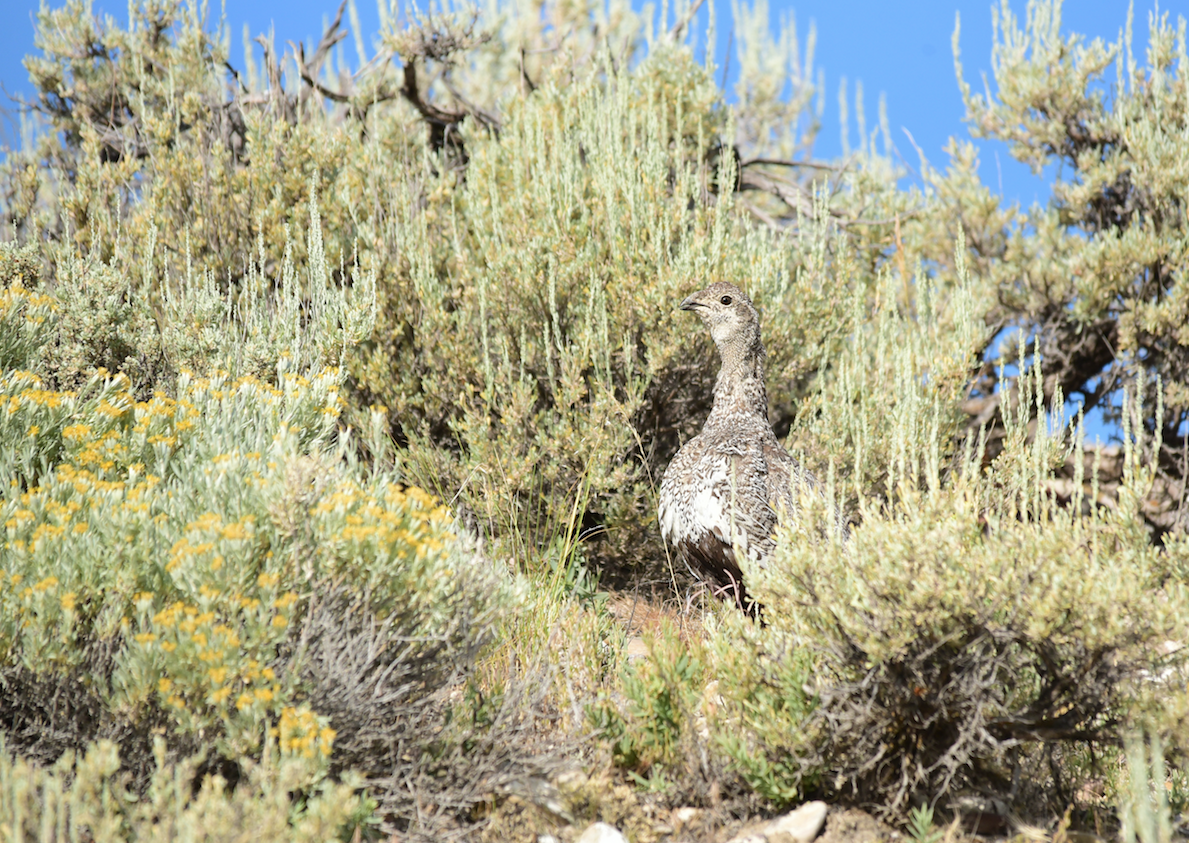You Can Prevent the Weeds from Burning Up the West!
In your outdoor pursuits, you might see cheatgrass alongside popular trails and roads because this invasive grass loves disturbed soil. You might have physically felt cheatgrass because of how they stick in your socks terribly!
Why is this plant so bad?! Well, weeds like cheatgrass are not native to the United States and have unique abilities to spread and outcompete other species. Then, the smallest spark can ignite this toothpick-wide plant that some firefighters call “grassoline” because of how fast it burns. In the past 20 years over 15 million acres of sagebrush habitat has gone up in smoke - for reference, that many acres would be like the entire state of West Virginia burning up! The size of these fires is also growing, with some reaching up to 400,000 acres. The fire cycle is far from natural and parts of sagebrush country are now burning way more frequently than pre-European settlement. Just imagine your favorite spot to hike, bike, hunt, or go birding charred black as far as the eye can see and then the only thing that grows back is cheatgrass. No thanks!
Want to prevent these ugly images and be part of the solution?? Of course, you do! Here’s how:
1) These buggers burn fast, so don’t let them start: Spindly, invasive annual grasses are some of the first to grow in the spring and they outcompete the native plants that are crucial to mule deer, elk, pronghorn, sage grouse, and lots of other wildlife. Then they dry out, creating a flammable base that makes wildfires hotter and more frequent. When those fires burn out sagebrush it can take decades, if not centuries, to return. Sooo…
Don’t drag trailer chains, twist them up securely.
Avoid parking a hot vehicle in tall grass.
Drown out your campfires, entirely.
Be very cautious with fireworks.
Don’t burn your TP, ewww!
2) Learn to identify weeds in your area and prevent their spread: These invasive species are really good at hitching a free ride and proliferating. Don’t let them! Here’s one of the worst ones infesting the sage: CHEATGRASS - This grass 2-6 inches tall. Flowering heads droop down as they mature with seeds. Leaves are wide and soft to the touch, with small hairs on both sides. Initially, this plant sprouts up green, turns purple when mature, and drys out to be light brown.
Here’s a great guide, if you want to do more research on what these plants look like and keep an eye out for them. Pick the barb-like seeds off of yourself, your dog, and your gear. Pack those seeds out with your garbage or burn them thoroughly in your controlled campfire. Seeds can also easily catch a ride in the undercarriage of your rig, so take that adventure mobile to the drive-thru carwash and blast its bottom clean after your explorations.
3) Keep your buddies accountable: Since most fires are human-caused, we have a major role in keeping them from happening. Tell your friends about this issue and report fires quickly when they happen.
4) Speak up for sagebrush rangeland funding: Contact your elected officials frequently to voice support for strong conservation funding for sagebrush country. Request that sagebrush conservation not be overlooked in budget allocations. It’s important that elected officials hear from their constituents that the state and federal agencies that manage these landscapes need continued and increased funding to keep sagebrush rangelands healthy for wildlife, secure bountiful outdoor opportunities, and support economically resilient rural communities.
Know that your actions make a huge difference.
Talking about invasive weeds isn’t sexy but they are darn dangerous to the places and wildlife we love. By taking action every time you go outdoors, together we can help protect sagebrush country. Lightning strikes will still happen and their impact may be reduced because of our actions. So, educate yourself and others, be careful of actions in sagebrush country that could start a fire, and prevent the spread of weeds that fuel these increasingly large fires. Share this post to help spread the word, and not the weeds, today!








